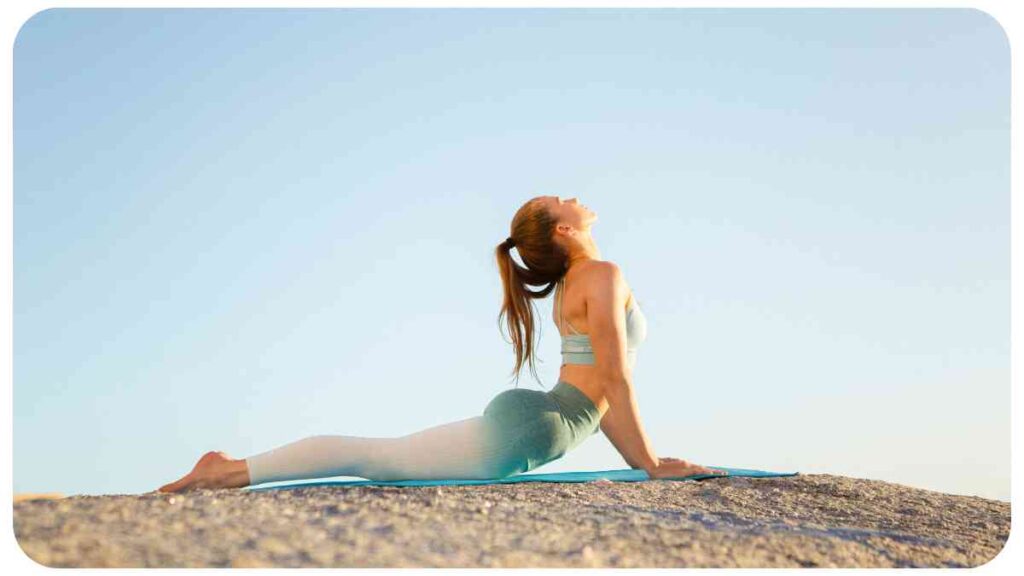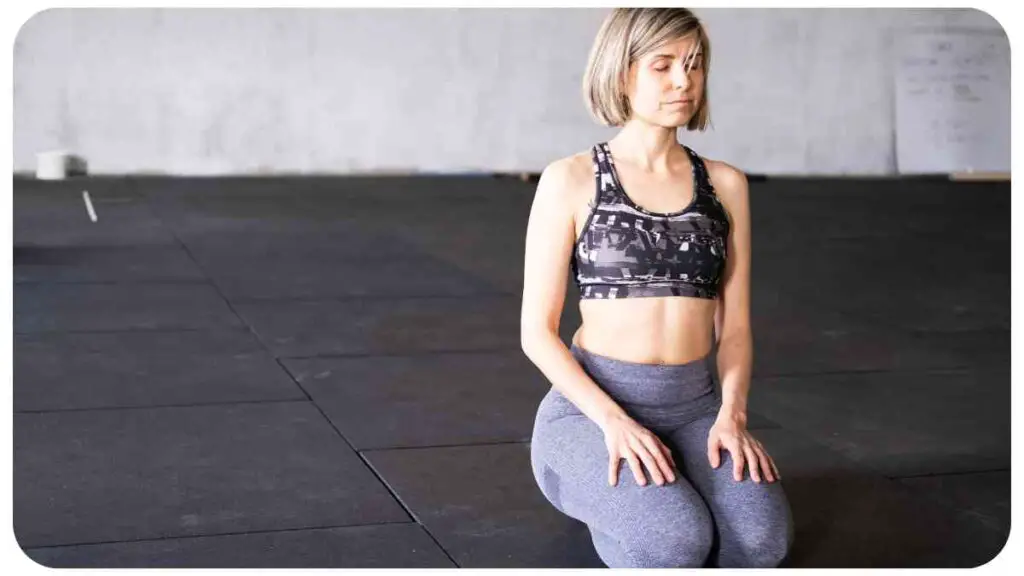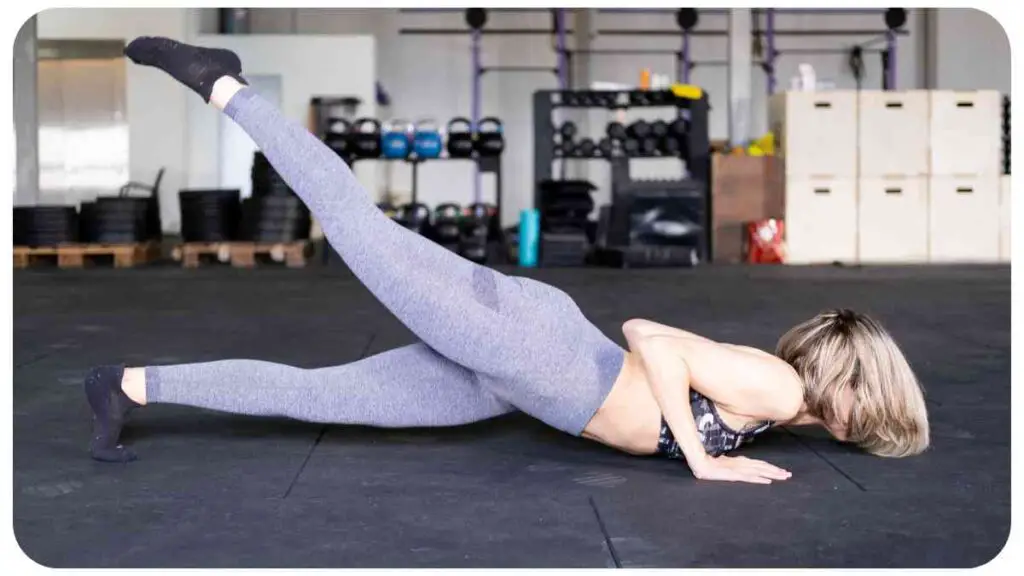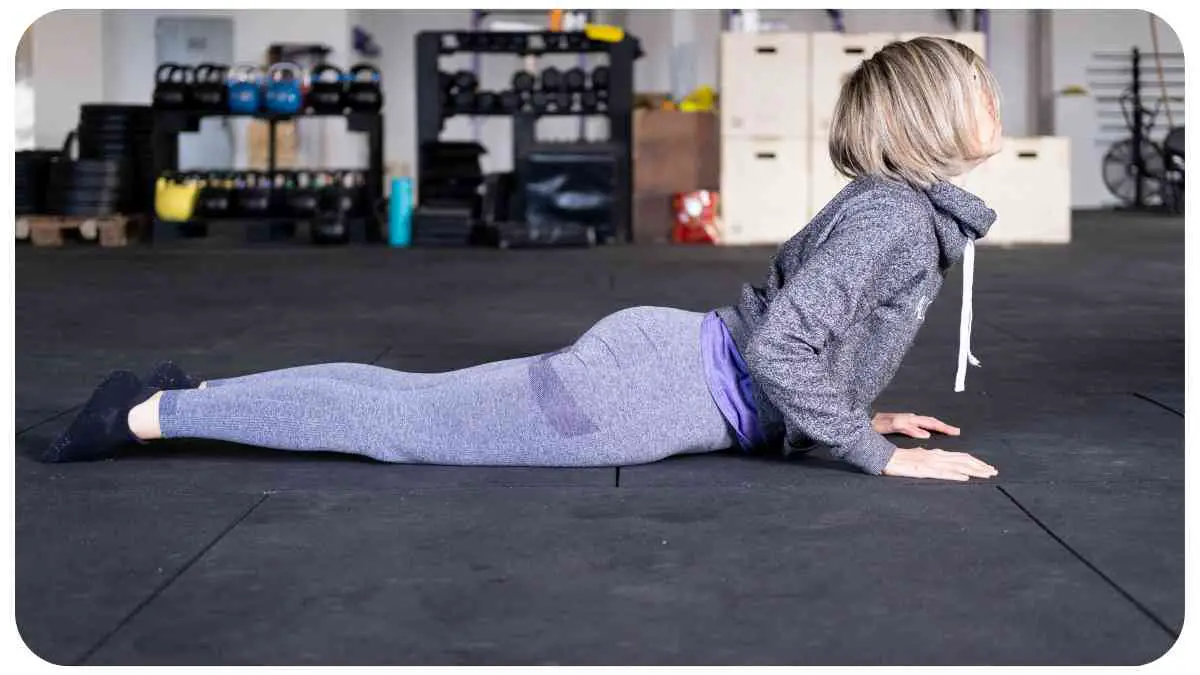Welcome to our comprehensive guide on fixing the common issues you may encounter when practicing Vinyasa Flow. If you’ve been struggling with this dynamic and popular style of yoga, don’t worry, you’re not alone. Vinyasa Flow can be physically challenging and mentally demanding, often requiring a certain level of experience and understanding.
In this article, we’ll dive deeper into the subject, explore the potential obstacles, and provide you with practical tips and techniques to enhance your Vinyasa practice.
| Key Points |
|---|
| Seek a qualified instructor who can guide and support you |
| Pay attention to alignment and breath throughout your practice |
| Personalize your practice to address your goals and needs |
| Incorporate props for added support and modification options |
| Embrace a balance between challenge and rest in your practice |
| Explore further resources and articles to deepen your understanding |
2. Understanding Vinyasa Flow
Overview of Vinyasa Flow
Vinyasa Flow is a dynamic style of yoga that links movement with breath, creating a seamless flow of postures. Also known as “flow yoga,” it combines strength, flexibility, and mindfulness to promote a sense of harmony and connection within the body and mind.
Vinyasa classes usually involve a series of sun salutations, standing and balancing poses, seated postures, backbends, and inversions, all fluidly transitioning from one to another.
Building a strong spiritual connection through yoga is essential for a meaningful practice. Explore our guide on Yoga and Spirituality to delve into the deeper meaning of your yoga journey.
Benefits of Vinyasa Flow
The benefits of practicing Vinyasa Flow go beyond physical well-being. This style of yoga helps improve cardiovascular health, build strength and flexibility, enhance focus and concentration, relieve stress, and promote mindfulness.
The rhythmic synchronization of breath and movement creates a moving meditation that can be both energizing and calming, leaving practitioners with an overall sense of balance and inner peace.
Common Challenges with Vinyasa Flow

While Vinyasa Flow offers numerous advantages, many practitioners encounter challenges along their journey. Whether you’re a beginner or a seasoned yogi, it’s essential to recognize these hurdles and address them effectively. Some common issues include:
Challenge 1: Lack of Awareness about Alignment
Vinyasa Flow can demand complex poses and transitions, requiring proper alignment to avoid strain and injury. Without adequate guidance and knowledge, it’s easy to overlook subtle nuances of alignment, impacting the effectiveness and safety of your practice.
Discover the transformative power of ancient yoga practices for attaining enlightenment. Dive into the secrets of Unlocking the Secrets of Ancient Yoga Practices and embark on a path of ultimate self-discovery.
Challenge 2: Insufficient Modification Options
Each individual is unique and may have different body types, abilities, and limitations. However, some Vinyasa classes may not offer enough modifications or variations to accommodate these differences, leaving practitioners feeling left behind or unable to fully engage in the practice.
Challenge 3: Overlooking Individual Needs
A one-size-fits-all approach may not work for everyone, particularly in a Vinyasa class. Each practitioner may have different goals, preferences, and intentions when attending a yoga session. Without mindfulness towards individual needs, it can be difficult to fully experience the benefits of Vinyasa Flow.
Now that we’ve identified the common challenges, let’s explore the easy fixes that can enhance your Vinyasa Flow practice.
3. Identifying the Problem
To improve your Vinyasa Flow practice, it’s crucial to first identify the specific issues you’re facing. Let’s take a closer look at the challenges mentioned earlier and discuss practical solutions.
Challenge 1: Lack of Awareness about Alignment
Table 1: Alignment Tips
| Posture | Alignment Tip |
| Downward Facing Dog | Spread your fingertips wide and engage your core to avoid dumping weight into your shoulders. |
| Warrior II | Align your front heel with the arch of your back foot and keep your knee directly over your ankle. |
| Plank Pose | Create a straight line from your head to your heels, engaging your core and avoiding sagging or lifting your hips. |
By paying attention to proper alignment, you can prevent strain and injury during your Vinyasa practice. Take the time to learn and understand the correct alignment in each pose, and don’t hesitate to ask your instructor for guidance.
Challenge 2: Insufficient Modification Options
Table 2: Modification Suggestions
| Challenging Pose | Modification Options |
| Chaturanga | Lower your knees to the ground to reduce the intensity and build strength gradually. |
| Bound Triangle | Use a yoga block to support your lower hand if reaching the floor is difficult. |
| Crow Pose | Start with a block under your feet, supporting your body while you work on balance and strength. |
It’s important to find a Vinyasa class that offers ample modification options to meet your unique needs. Alternatively, communicate with your instructor about modifications you may require, and they can suggest alternatives in real-time.
Yoga offers profound spiritual benefits that can help you connect with your higher self. Learn how to enhance this connection through our guide on The Spiritual Benefits of Yoga, and experience spiritual growth like never before.
Challenge 3: Overlooking Individual Needs
Table 3: Tailoring Your Vinyasa Practice
| Goal | Personalization Tips |
| Increasing Flexibility | Focus on poses that target specific areas you want to work on, such as hip openers or chest openers. |
| Building Strength | Incorporate balancing poses and core-strengthening exercises into your practice. |
| Finding Inner Calm | Add seated meditation or restorative poses to create a more soothing and grounding experience. |
Customizing your Vinyasa Flow practice according to your goals and intentions can greatly enhance its benefits. Don’t be afraid to make modifications, explore different variations, or add elements that resonate with your personal preferences.
Now that we’ve unveiled the challenges and their solutions, let’s delve deeper into some valuable tips and techniques to improve your Vinyasa practice.
4. The Easy Fix: Tips and Techniques
Finding a Qualified Instructor

Table 4: Key Considerations when Choosing an Instructor
| Consideration | Importance |
| Certification and Training | Look for an instructor who has completed a reputable yoga teacher training program and holds a recognized certification. |
| Experience | Seek instructors with a solid background in teaching Vinyasa Flow and who have experience working with students of varying levels. |
| Teaching Style | Find an instructor whose teaching style resonates with you and who can effectively communicate alignment cues and modifications. |
A qualified instructor can make a significant difference in your Vinyasa Flow journey. They have the knowledge and expertise to guide you safely and effectively, ensuring a rewarding and transformative experience.
Looking to say goodbye to back pain through yoga? Try incorporating these helpful yoga poses mentioned in our article Say Goodbye to Back Pain with These Yoga Poses to alleviate discomfort and promote a healthier spine.
Focusing on Alignment and Breath
Table 5: Alignment and Breath Tips
| Aspect | Tips |
| Breath Awareness | Cultivate a steady and deep breath, syncing each movement with an inhale or exhale. Let the breath guide the flow of your practice. |
| Core Engagement | Activate your core muscles in every pose to help stabilize your body and create a strong foundation for movement. |
| Listening to Your Body | Pay attention to any discomfort or strain. Modify or adjust the pose to align with your body’s capabilities and limitations. |
Alignment and breath are at the core of an effective Vinyasa Flow practice. By focusing on these fundamental aspects, you can improve your overall form, protect yourself from injury, and create a harmonious flow between your movements and breath.
Customizing Your Practice
Table 6: Personalization Ideas
| Aspect | Ideas |
| Warm-up Sequence | Tailor the warm-up sequence to target specific areas that may need extra attention or preparation for your practice. |
| Adding Challenges | Incorporate more complex poses gradually, challenging yourself as your strength and flexibility improve. |
| Class Length and Intensity | Adjust the duration and intensity of your practice to suit your schedule and energy levels. It’s okay to have shorter, more energetic sessions when time is limited. |
Personalizing your Vinyasa practice allows you to cater to your unique needs and goals. Experiment with different approaches, sequences, and class formats to find what works best for you.
Incorporating Props for Support
Table 7: Prop Recommendations
| Pose | Recommended Prop |
| Forward Fold | Use a yoga block under your hands if you cannot comfortably reach the floor. |
| Restorative Poses | Bolsters, blankets, and straps can provide additional support and comfort during restorative poses. |
| Balance Poses | Use a wall or a chair for stability as you work on your balance and alignment. |
Props can be valuable tools in your Vinyasa practice, assisting you in achieving proper alignment, supporting your body, and deepening your stretches. Embrace the use of props to enhance your experience and find greater ease in challenging poses.
5. Real-Life Examples and Personal Experience
Throughout my journey with Vinyasa Flow, I’ve encountered various challenges and discovered effective ways to overcome them. Let me share some personal anecdotes and insights that may resonate with you.
My Journey with Vinyasa Flow
When I first started practicing Vinyasa Flow, I was captivated by the grace and fluidity of the sequences. However, I struggled with maintaining proper alignment and often found myself feeling frustrated and discouraged. It wasn’t until I sought guidance from a skilled instructor that I began to truly understand the importance of alignment and its impact on my practice.
Enhance your understanding of yoga and overcome common mistakes in your practice. Dive into our resource on Troubleshooting Your Yoga Practice to identify and fix common pitfalls, ensuring a more fulfilling yoga journey.
Overcoming Challenges with Alignment
Table 8: Alignment Tips
| Pose | Alignment Tip |
| Warrior I | Square your hips towards the front of the mat and extend your arms above your head, keeping your shoulders relaxed. |
| Tree Pose | Press your foot into your inner thigh or calf, avoiding placing any pressure on the knee joint. Lift your arms overhead for balance and stability. |
| Upward Facing Dog | Distribute the weight evenly between your hands and feet, lifting the chest while keeping the shoulders away from the ears. |
With a mindful focus on alignment, I gradually refined my poses and experienced a newfound stability and freedom in my practice. Understanding the subtle adjustments and cues specific to each pose allowed me to cultivate a deeper connection between my body and breath.
Tailoring Vinyasa to Suit My Needs
As I progressed in my Vinyasa journey, I realized the importance of tailoring my practice to suit my individual needs. I developed a sequence that focused on opening my hips and shoulders, areas where I experienced tightness and limitation.
By incorporating poses like Pigeon, Cow-Face Arms, and Gomukhasana, I noticed a significant improvement in my flexibility and overall comfort during practice.
The Importance of Finding Balance

Throughout my Vinyasa Flow practice, I’ve learned the significance of finding a balance between challenge and ease. Pushing myself beyond my limits solely for the sake of intensity often led to exhaustion and frustration.
On the other hand, staying within my comfort zone prevented growth and exploration. By embracing a mindful and compassionate approach, I started to appreciate the benefits of both challenge and rest, incorporating a healthy balance into my practice.
By sharing these experiences, I hope to inspire you on your own Vinyasa Flow journey. Remember, each practitioner’s path is unique, and it’s essential to listen to your body and honor your limits while still exploring new possibilities.
6. Conclusion
In conclusion, Vinyasa Flow can be a transformative and invigorating practice, but it also comes with its fair share of challenges. By addressing the common obstacles such as alignment, modification options, and individual needs, you can enhance your Vinyasa practice and reap its numerous benefits.
Throughout this article, we have discussed the importance of finding a qualified instructor who can guide you through the practice, emphasize the significance of alignment and breath, and offer modifications to accommodate varying capabilities. Additionally, personalizing your practice by focusing on specific goals and incorporating props can deepen your connection with the practice and facilitate growth.
Drawing from personal experiences and insights, it is crucial to remember that the journey of Vinyasa Flow is unique to each individual. Embrace the process, be patient with yourself, and appreciate the progress you make along the way.
Whether you’re a beginner or a seasoned practitioner, approaching your Vinyasa practice with an open mind, an intention to grow, and a willingness to explore your body’s capabilities will undoubtedly yield positive results.
So, if Vinyasa Flow isn’t working for you, don’t worry! With a little attention to alignment, personalization, and finding the right instructor, you can easily overcome any hurdles and enjoy the full potential that this dynamic style of yoga has to offer. Take a deep breath, roll out your mat, and let the flow begin!
Remember, the joy and fulfillment lie not only in achieving the perfect pose but in the journey itself. Happy flowing!
Further Reading
Here are some additional resources to explore for further information on Vinyasa Flow:
6 Problems in Vinyasa Yoga and Their Solutions: This blog post discusses common problems encountered in Vinyasa Yoga and provides practical solutions to overcome them.
Introduction to Vinyasa Flow Yoga: This article provides an introduction to Vinyasa Flow Yoga, explaining its principles, benefits, and offering insights to help deepen your understanding of the practice.
Vinyasa Yoga: What It Is, Benefits, and More: This informative article from Self magazine explores the basics of Vinyasa Yoga, including its benefits, variations, and tips for getting the most out of your practice.
FAQs
Here are some frequently asked questions about Vinyasa Flow Yoga:
What is Vinyasa Flow Yoga?
Vinyasa Flow Yoga is a dynamic style of yoga that emphasizes linking movement with breath. It involves smoothly transitioning from one pose to another in a continuous, flowing sequence.
Is Vinyasa Flow Yoga suitable for beginners?
Yes, Vinyasa Flow Yoga can be suitable for beginners as long as they find the right level of instruction and modification options. Starting with beginner-friendly classes or workshops can help build a solid foundation.
How is Vinyasa Flow different from other types of yoga?
Vinyasa Flow differs from other types of yoga by its emphasis on continuous movement and the synchronization of breath with each pose. It offers a dynamic, fluid practice that can vary in intensity and pace.
Can I practice Vinyasa Flow if I have certain physical limitations or injuries?
Yes, Vinyasa Flow can be adapted and modified to accommodate different physical limitations or injuries. It’s important to communicate your condition to the instructor and work with them to find appropriate modifications.
How can I improve my strength and flexibility in Vinyasa Flow?
Consistency and regular practice are essential for improving strength and flexibility in Vinyasa Flow. Focusing on specific poses that target the areas you want to work on, and gradually challenging yourself as you progress, can aid in enhancing these aspects.
Remember, it’s always recommended to consult with a qualified instructor or healthcare professional for personalized guidance and advice based on your individual circumstances.

Hello, my name is Hellen James! I am a yoga teacher and writer who loves to share information about how you can achieve a more fulfilling life. I have been practicing mindfulness, yoga, and meditation for over 10 years. My passion for these practices has led me to teach them to others.

